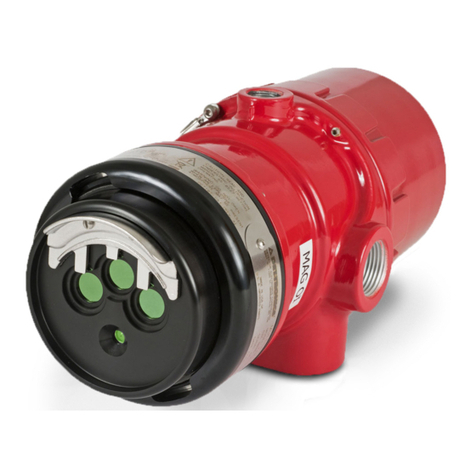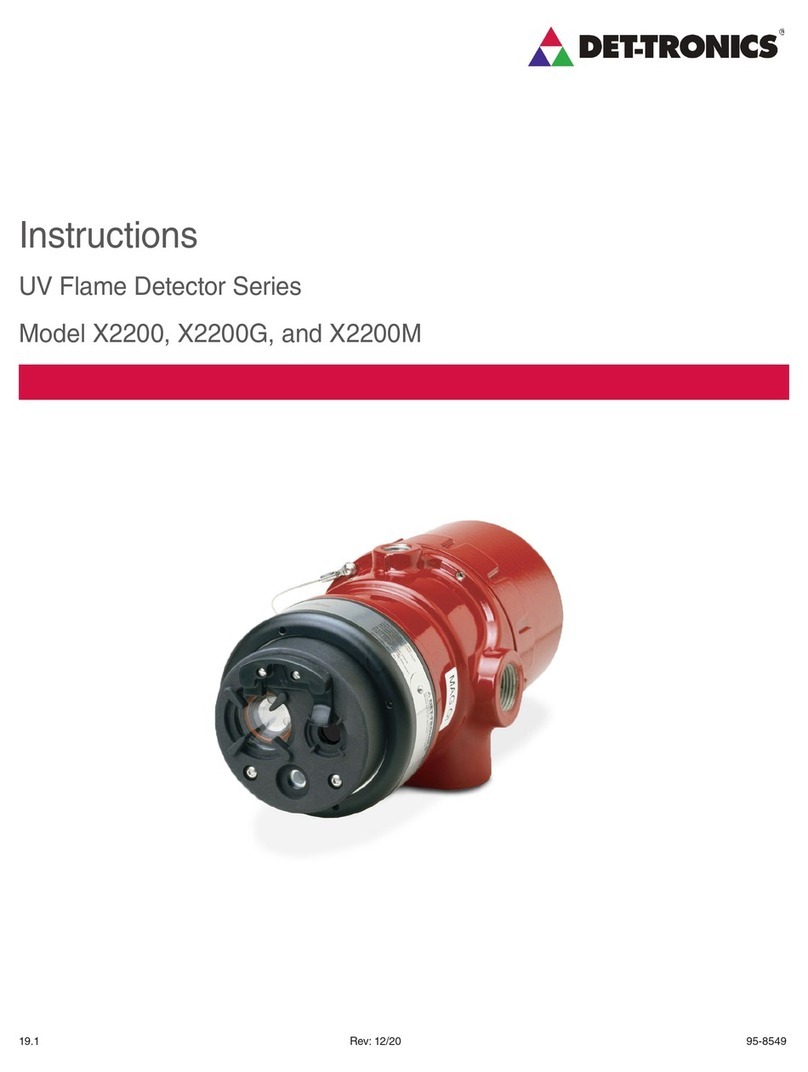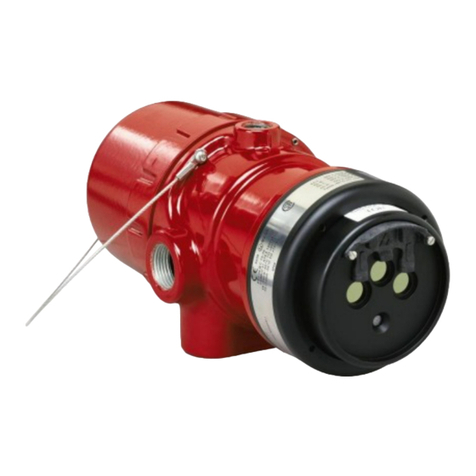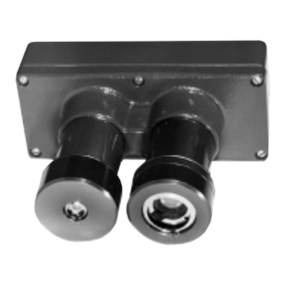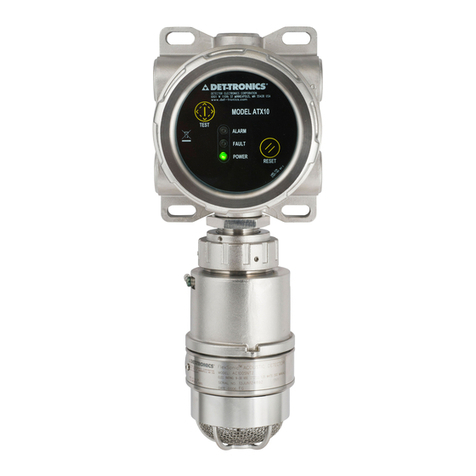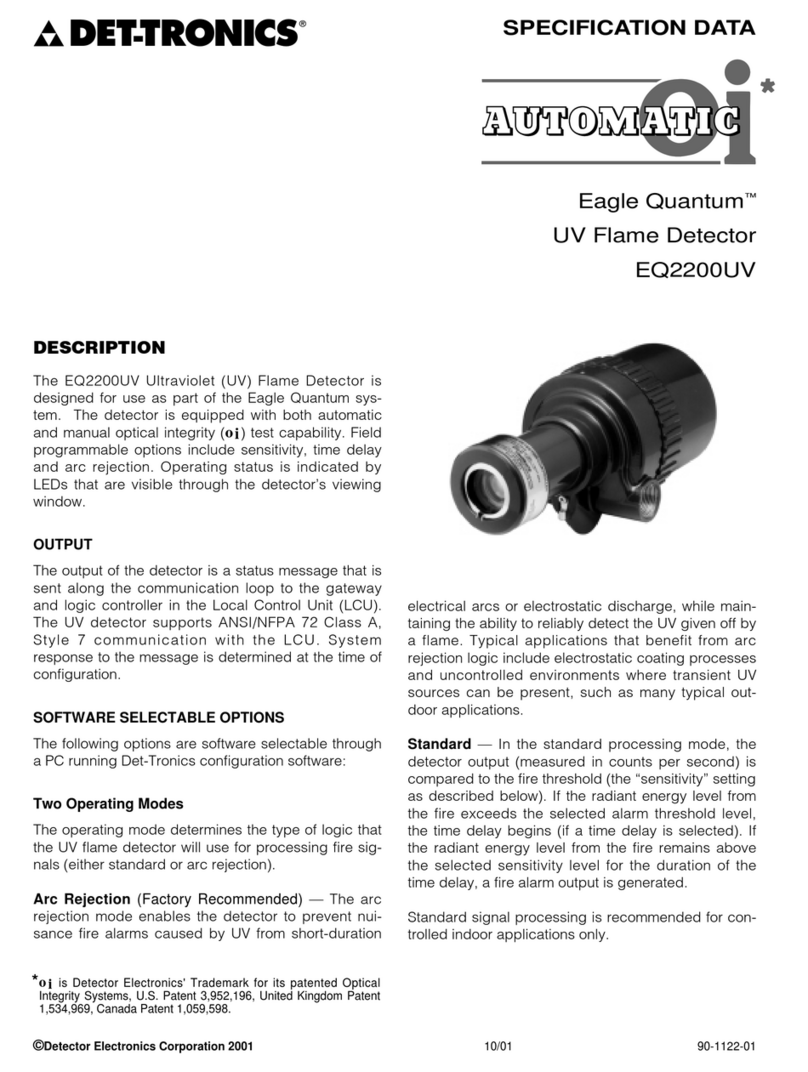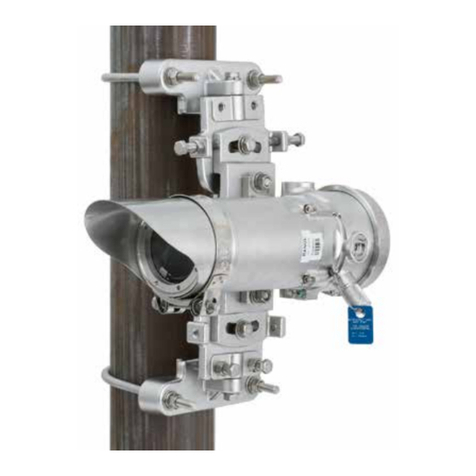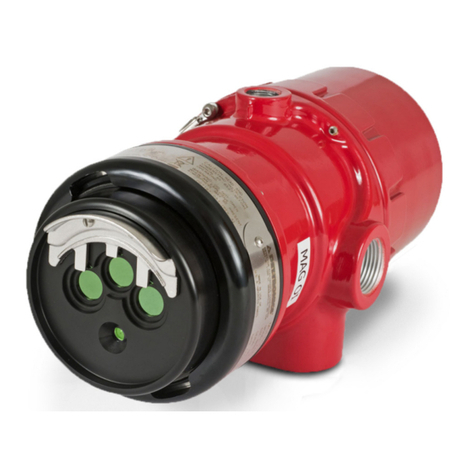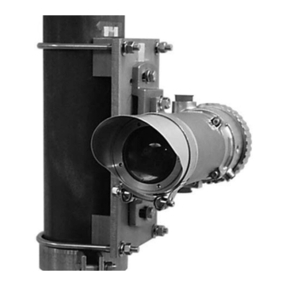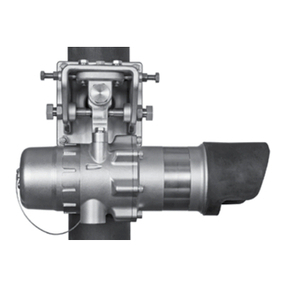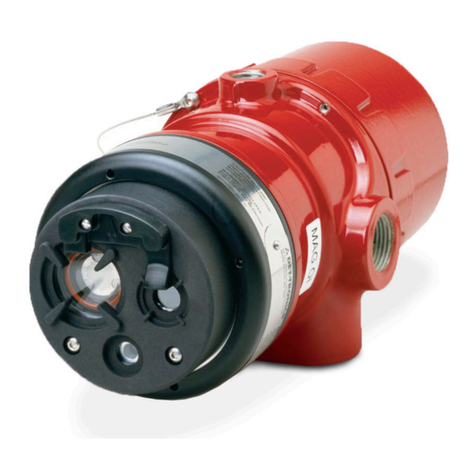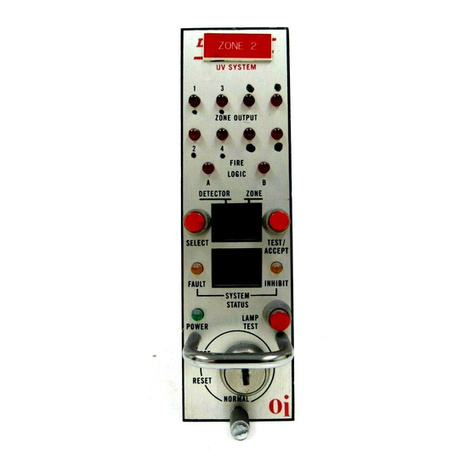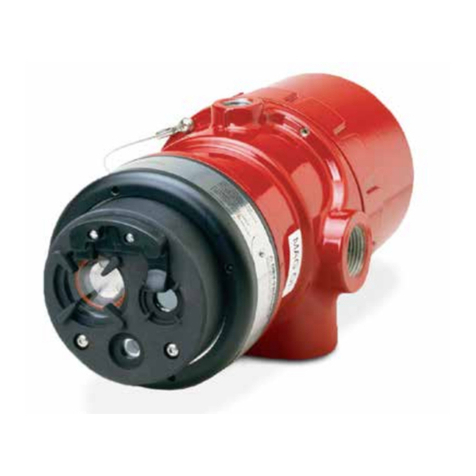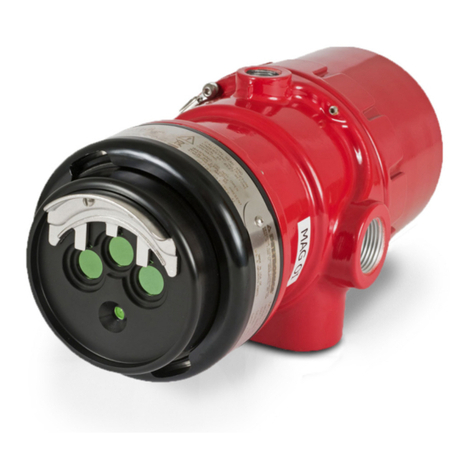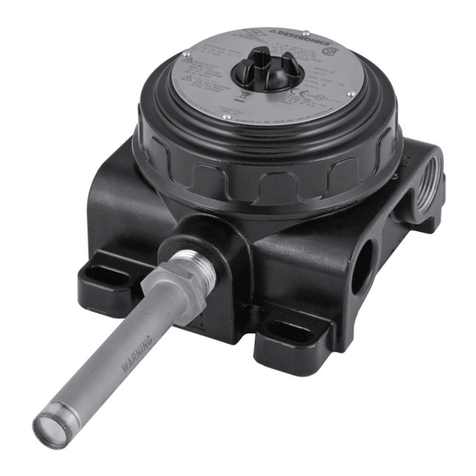ADDRESSABILITY
Device identification is accomplished by setting
switches on a DIP switch assembly located on the
electronic module (valid address range is 5 to 250).
ALARM LOG
The detector maintains an alarm log in non-volatile
memory. The time and date for the last eight alarms
are logged.
TERMINAL WIRING BOARD
External wiring is connected to plug-in screw terminal
connectors on the terminal wiring board located inside
the electronic module junction box.
ENCLOSURE
The explosion-proof NEMA/Type 4X enclosure is
designed for use in a variety of hazardous locations.
SOFTWARE SELECTABLE OPTIONS
The following software selectable options are available
using a PC running Det-Tronics configuration software.
Operating Mode
The operating mode determines the type of logic that
the UV flame detector will use for processing fire sig-
nals. (Arc rejection mode is the recommended set-
ting).
Arc Rejection Mode (Factory Recommended). The
arc rejection mode enables the detector to prevent
nuisance fire alarms caused by UV from short-duration
electrical arcs or electrostatic discharge, while main-
taining the ability to reliably detect the UV given off by
a flame. The arc rejection mode is not recommended
unless these false alarm sources are present within the
application to be protected. Typical applications that
benefit from arc rejection logic include electrostatic
coating processes and uncontrolled environments
where transient UV sources can be present, such as
many typical outdoor applications.
The arc rejection algorithm examines the radiant ener-
gy level detected within a specified unit of time (timed
gate). The output of the detector is determined by
three variables:
— sensitivity level
— gate length
— number of consecutive gates required.
Different combinations of these variables allow for var-
ious levels of transient arc rejection capability. There
are four arc rejection levels (very high, high, medium,
and low) that are selectable for the detector through
the PC. Refer to Table 2.
The proper arc rejection setting for a given application
must be determined through testing. For indoor appli-
cations with known electrostatic energy fields within 15
feet of the detector, an arc rejection setting of “very
high” or “high” is typical. For outdoor applications,
“medium” or “low” arc rejection settings are typical.
It is recommended that each detector be thoroughly
tested at the programmed arc rejection setting within
the ambient conditions that will be present during nor-
mal operation. This will help to ensure that the select-
ed arc rejection setting is proper for the application.
Standard Mode. In the standard processing mode,
the detector output (measured in counts per second)
is compared to the fire threshold (the “sensitivity” set-
ting as described below). If the radiant energy level
from the fire exceeds the selected alarm threshold
level, the time delay begins (if a time delay is select-
ed). If the radiant energy level from the fire remains
above the selected sensitivity level for the duration of
the time delay, the fire alarm output is activated. In
every application, it is crucial to ensure that the radiant
ultraviolet energy level from the expected fire at the
required distance from the detector will exceed the
selected sensitivity level.
Standard signal processing is recommended for con-
trolled indoor applications only.
2
Status LED
Normal with automatic oi selected Blinks every 5 seconds
Normal with manual oi selected Blinks every 10 seconds
Fault Off
Fire On
Table 1—Detector Status/Indications
